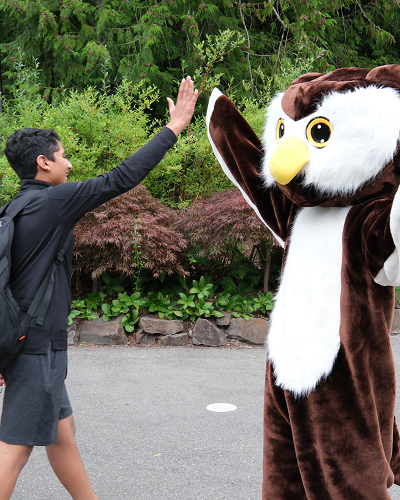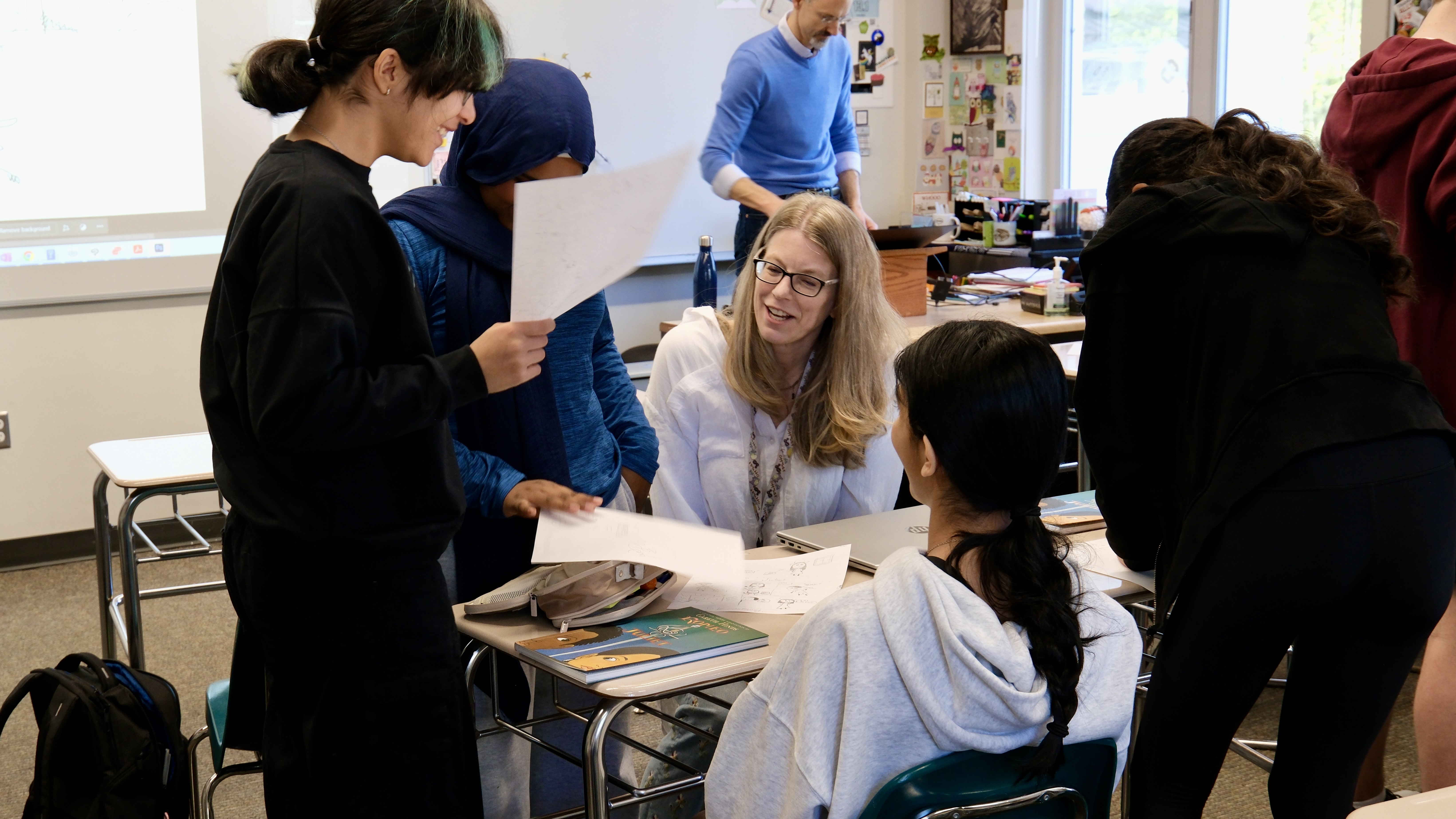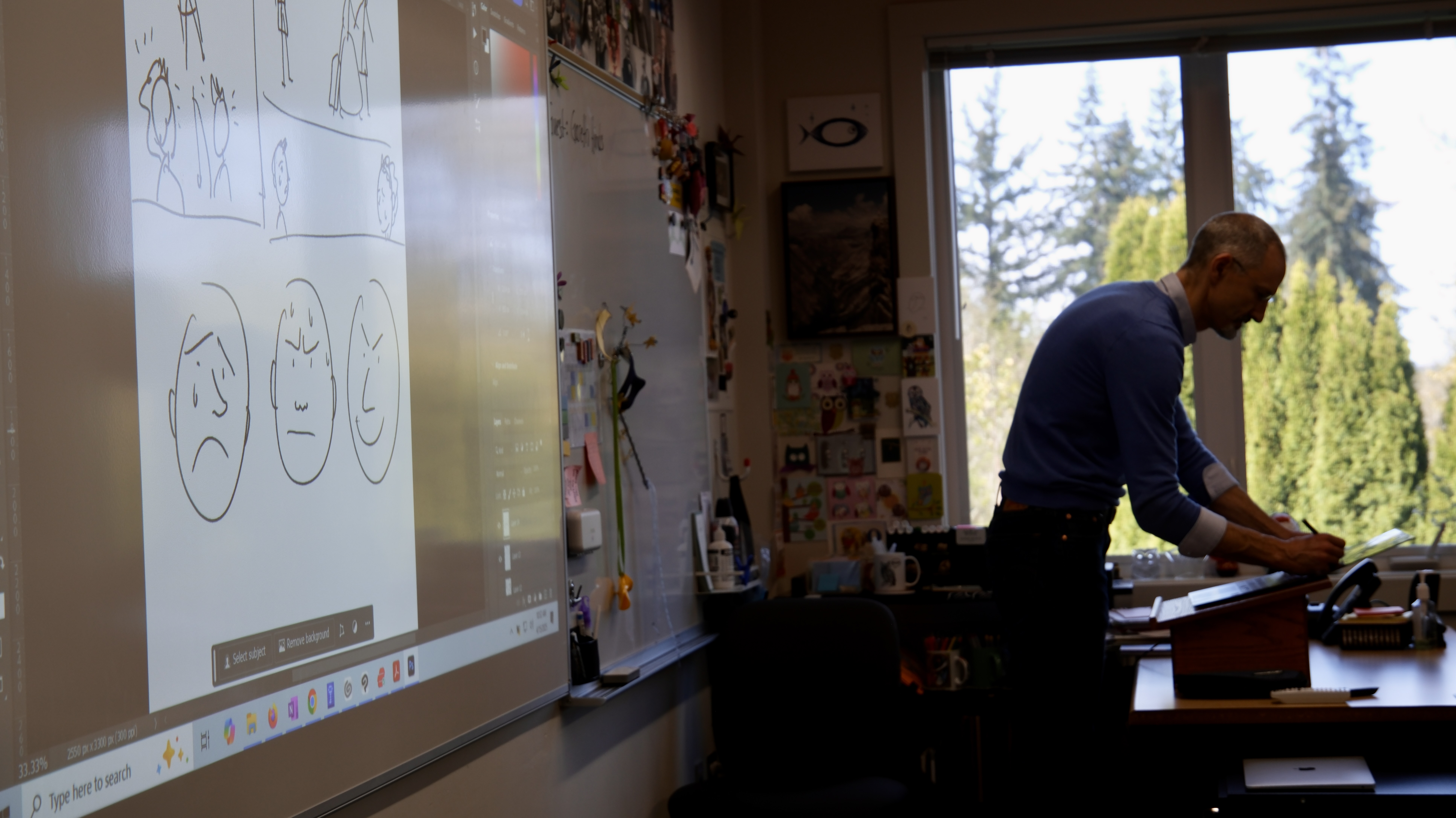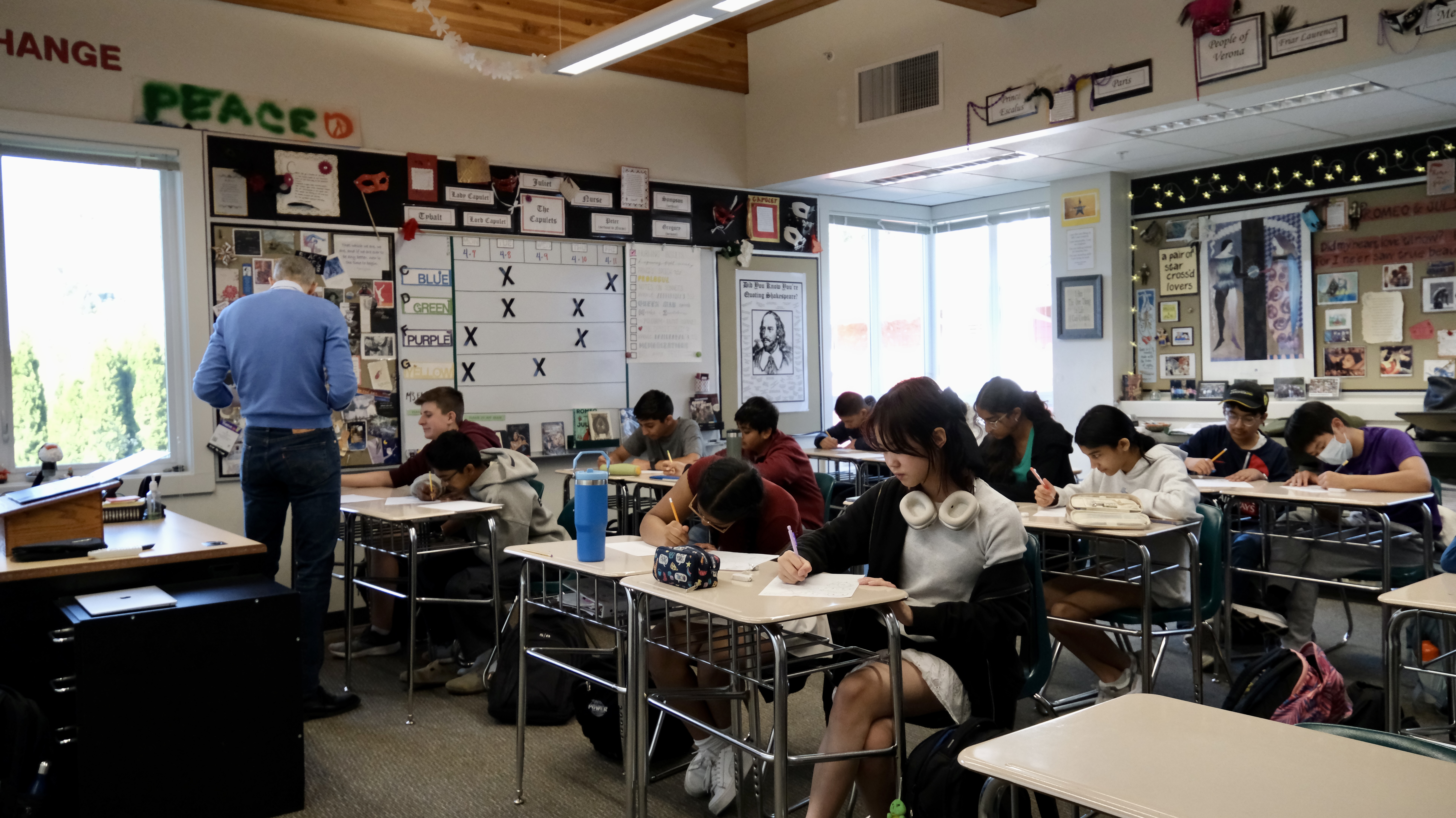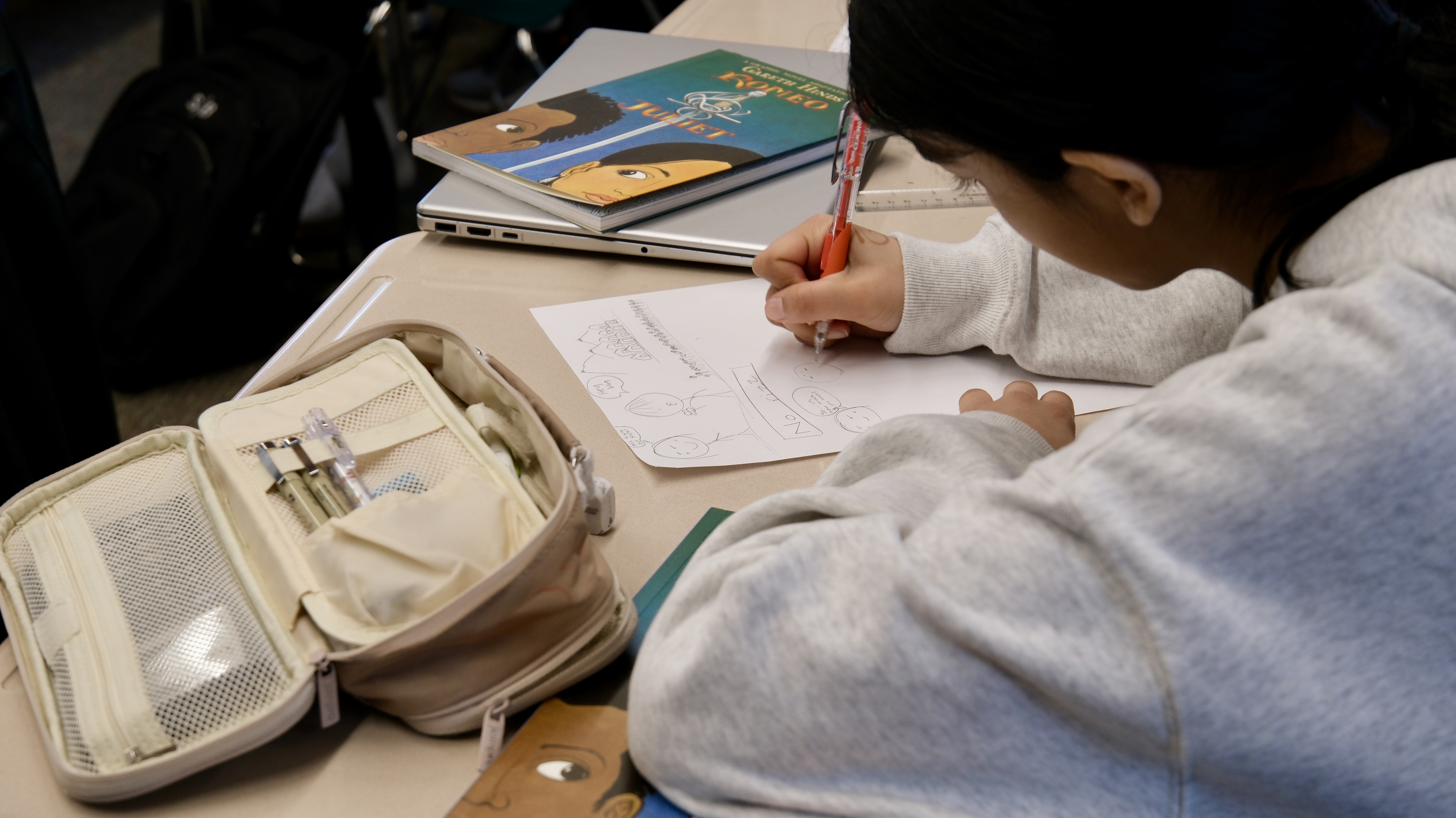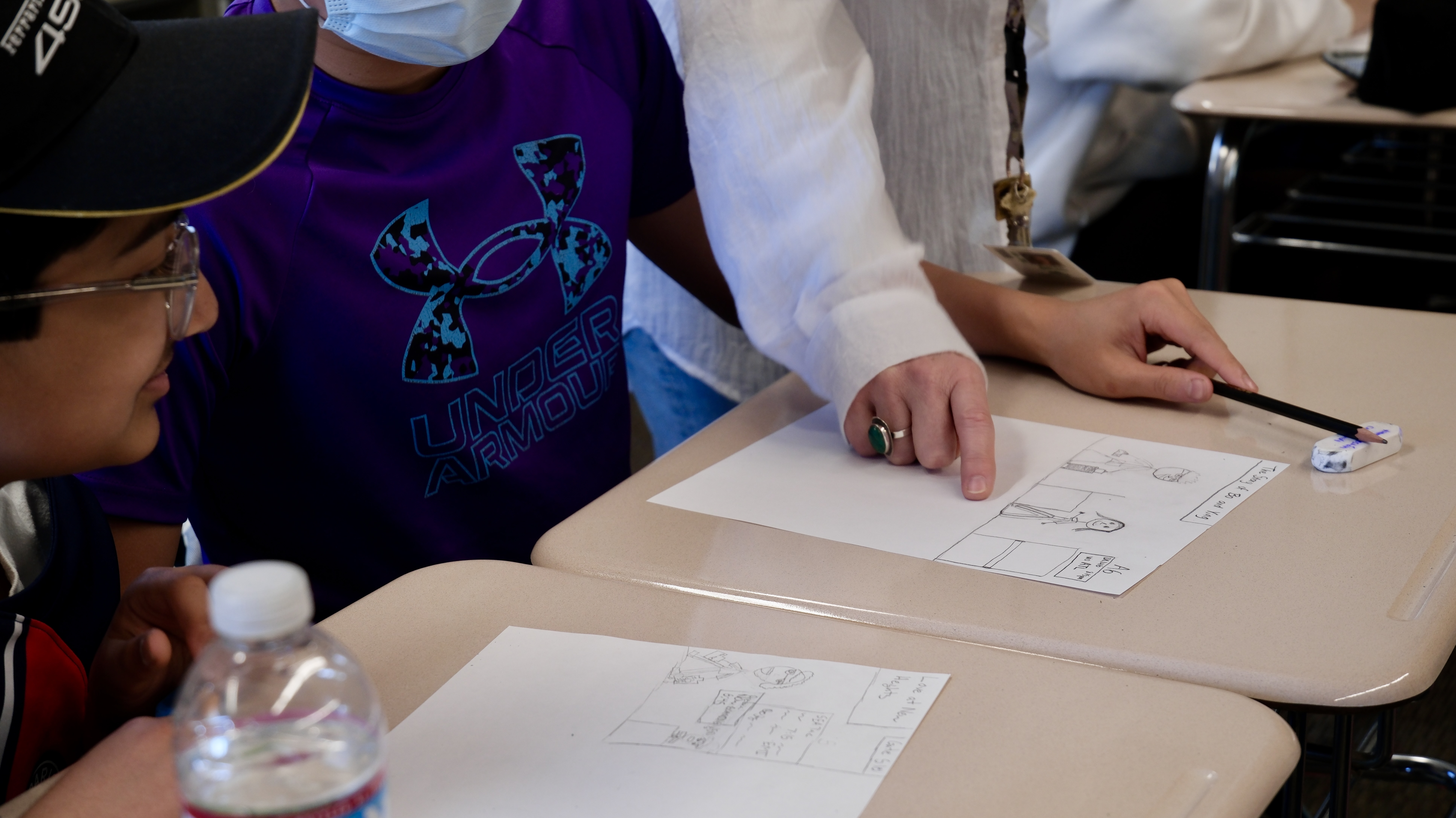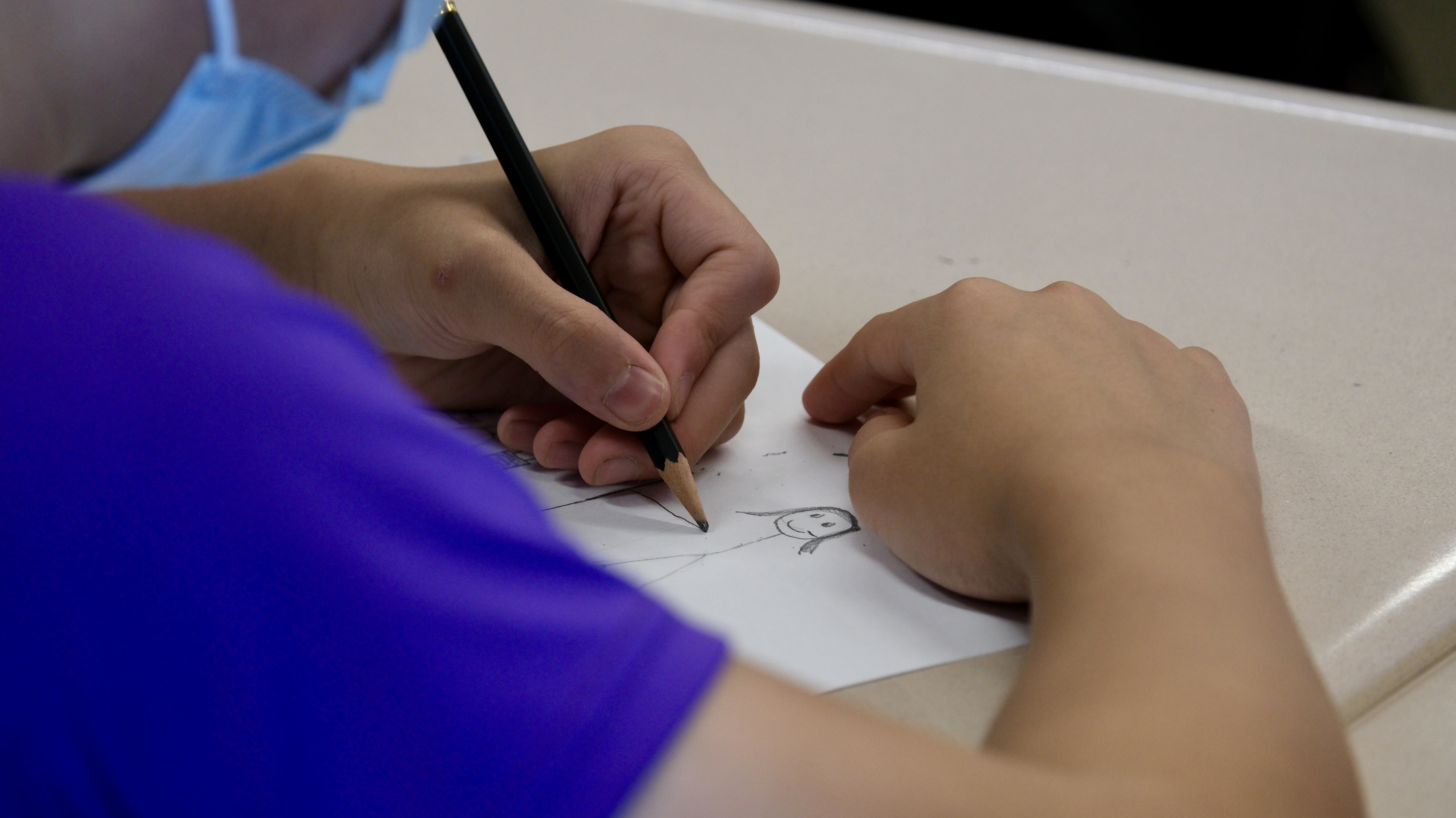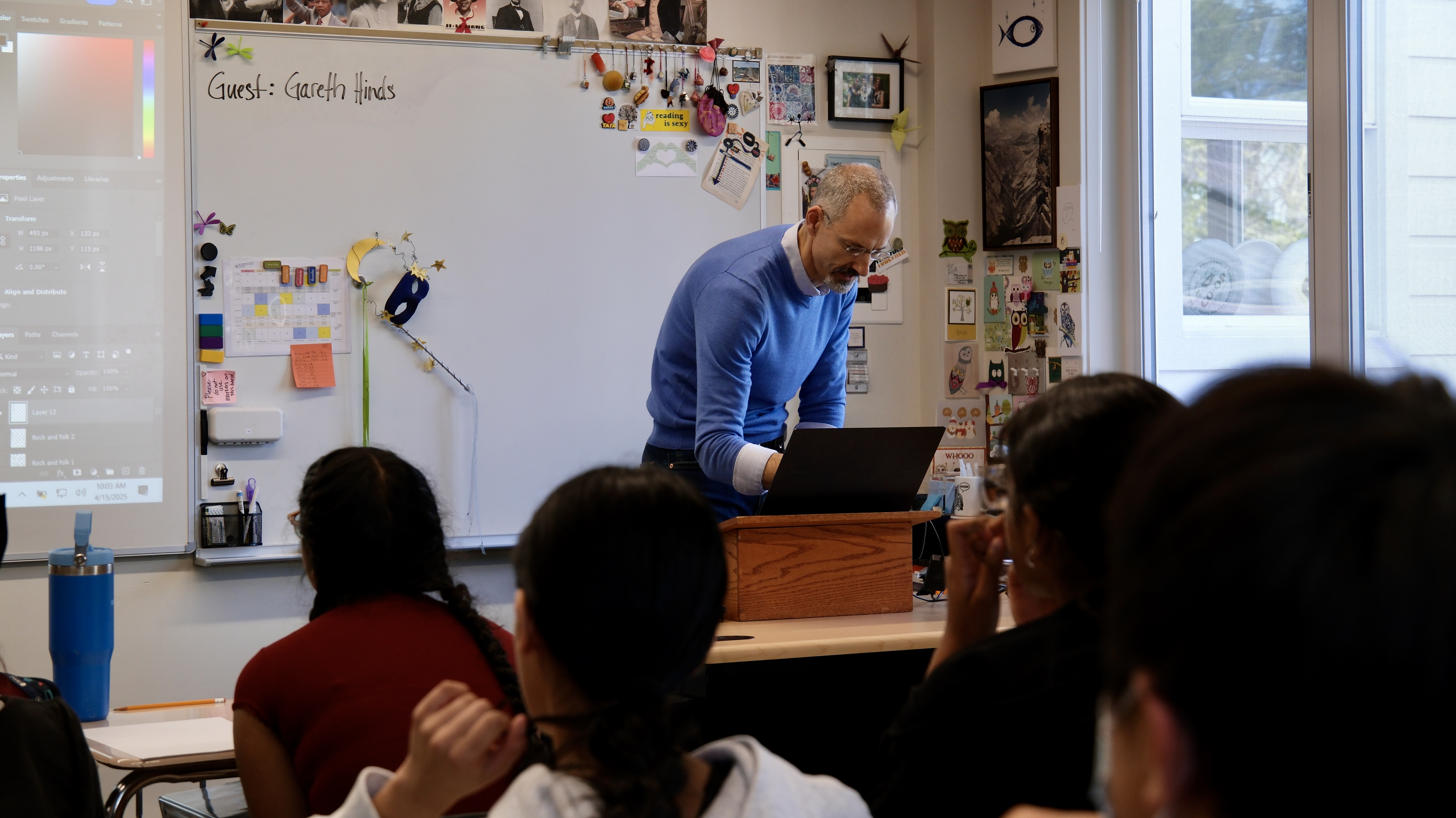Writer's Symposium Features Gareth Hinds
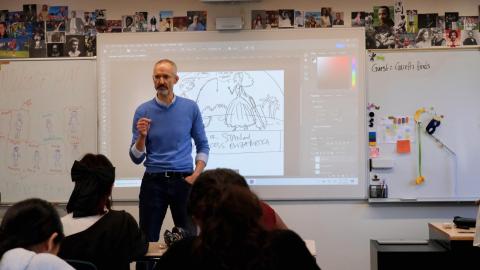
This year, the Middle School Writer’s Symposium hosted Gareth Hinds, a critically acclaimed author and illustrator. His specialty? Literary classics turned graphic novels.
Hinds’ work includes adaptations of well-loved texts like “Romeo and Juliet,” “Beowulf,” “The Odyssey,” and “Macbeth” — which the New York Times labeled “stellar” and “a remarkably faithful rendering.” Rebecca Moore, our Middle School librarian, says it “seemed like serendipity” to book Hinds for the Symposium. “While we couldn’t bring Shakespeare on campus, we could bring in the graphic novelist who wrote a multicultural adaptation of ‘Romeo and Juliet’ that our students have already studied!”
When he adapts a text, Hinds says he sticks to the facts and wants to “stay close to what happens both in the story and within the historical context.” But the “staging and abridging is where my creative license comes in,” he says. His goal is to give readers the same experience as reading the original text, but in a new and engaging format.
During his presentation, Hinds took Middle Schoolers behind the scenes of his creative process, sharing with them his storyboards, sketches, and the timeline for adapting a historic text. Students learned how he chooses scenes to highlight, scenes to simplify, and how he determines if a scene adds value to his adaptation of the text. They even got to watch him sketch a page right in front of their eyes!
Hinds joined Overlake’s Middle School English classes during the workshop section of the Symposium. During their hour with the author, students created a one-page visual short story. They sketched an establishing shot of the characters, then implemented literary concepts they already knew from class (like tension or foreshadowing) to build the rest of their story. Hinds then guided students through the details of their drawings, teaching them how they can change the meaning of a scene with tiny adjustments, like adding angry eyebrows to a character’s face. At the end of the workshop, students exchanged valuable feedback to gain insight about what worked and what didn’t in their story.
The value of Hinds’ storytelling is twofold: he retains the original meaning of the text but takes a creative (and visually stunning) approach to the retelling. When students participate in this style of storytelling, they’re learning to make creative choices within the common literary “rules” they already know — all without losing the true heart of the narrative.
“We’re taking something universal and letting students be independent with it,” reflects teacher Karen Mihata.

